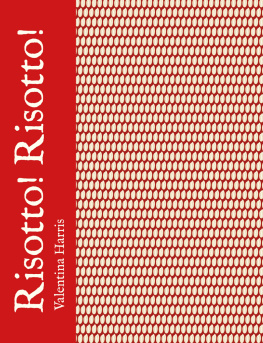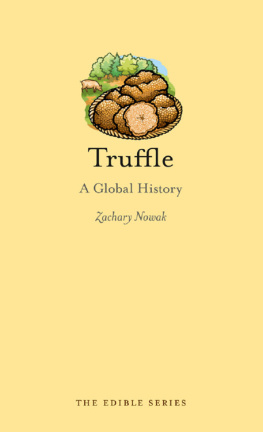| 2000 BC | The first known text about the truffle is recorded by the Neo-Sumerians on clay tablets. |
| 500 BC | An alien resident of Athens is given citizenship as a reward for inventing a new way to prepare truffles. |
| 300 BC | The truffle appears in A History of Plants, the work of Greek philosopher Theophrastus. |
| AD 400 | The oldest surviving truffle recipes can be found in the first known European cookbook, Apicius, which records cooking and dining in Imperial Rome. Included are six recipes for cooking truffles, a recipe for wine sauce made with truffles, and methods of storing truffles in sawdust. The author is believed to be Marcus Gavius Apicius, a celebrated gourmand who lived during the reign of Augustus and Tiberius. |
| AD 350500 | Truffles acquire a sinister reputation during the Dark Ages; they are considered a sign of the presence of the devil and believed to be grown from the spit of witches. During the Holy Inquisition, the truffle is described as black as the soul of the damned and banned from the kitchen because of it seductive appeal. |
| AD 1000 | Truffles are featured in the medical writings of the Persian physician Avicenna (considered the forefather of modern medicine) as a treatment for healing wounds, weakness, vomiting, and pain. The variety of truffle he wrote about, the Terfezia or desert truffle, is now known to contain antibiotics. |
| AD 1100 | The Carpentras truffle market is established in Provence, and is still held every Friday morning from November to March. In 1155 Raymond V, Count of Toulouse, insists on its exclusivity and bans the creation of all other markets between the Ouvze and Sorgue rivers. |
| AD 1316 | Pope John XXII is installed in Avignon and plants oak trees nearby in hopes that truffles will follow. |
| AD 1500 | A sixteenth-century travel writer describes the sight of twenty-five or thirty camels laden down with truffles being transported from the mountains of Armenia and Turkey, where they were grown, to the market in Damascus. A love for truffles in the region traces back to ancient Babylonia, where they were bountiful along the banks of the Euphrates and Tigris rivers. |
| AD 1526 | French king Franois I discovers the black truffle during his capture in Madrid and reintroduces it to France upon his return, serving mounds of them at sumptuous banquets at the court in Fontainebleau. |
| AD 1533 | Catherine de Mdicis introduces the white truffle (Tuber magnatum) to France. |
| AD 1651 | Franois Pierre de la Varenne includes more than sixty truffle recipes in Le Cuisinier Franois, the founding text of modern French cuisine, and is the first chef known to pair truffles with foie gras. |
| AD 1808 | The beginnings of the golden age of truffles: Joseph Talon (from the French village of Saint-Saturnin-ls-Apt in Provence) creates the first cultivated truffire, or truffle plantation, by planting acorns from oak trees that were already known to produce truffles. He had success and soon becomes the largest truffle producer in the region. He is, of course, widely copied. |
| AD 1810 | A Frenchman, Nicolas Appert (17491841), creates a canning method that allows for the conservation of all manner of foods, including truffles, thus preserving their flavor and perfume. Napolon Bonaparte had offered an award of 12,000 francs to the person who could invent a useful way of preserving food for his army. After fifteen years of experimentation, Appert succeedednearly 100 years after Louis Pasteur proved that heat killed bacteria. Apperts method was to fill thick, large-mouthed bottles with foods of every description, ranging from beef, poultry, eggs, and milk to prepared dishes. He left air space at the top of the bottle and sealed it with a cork and a metal vise. The bottle was wrapped in canvas to protect it, then cooked in boiling water. To this day, canned French truffles and truffle juice may note on their label Extrait par Appertisation (Extracted by the Appert Method). |
| AD 1847 | August Rousseau, a truffle grower in Carpentras, plants seventeen acres of oak trees from acorns gathered beneath truffle-producing oaks. His harvest is so large that he receives a prize at the 1855 Worlds Fair in Paris. |
| AD 1863 | Vineyards in France are ravaged by a phylloxera epidemic. In a region where the land is favorable to truffle growth, oak trees replace vines, and intensive truffle production begins in earnest. |
| AD 1892 | A record year for truffles in France: 2,200 tons (2,000 tonnes). |
| AD 1910 | French truffle production declines to 1,100 tons (1,000 tonnes). |
| AD 1914 | Truffle production suffers as World War I continues; truffle farms are abandoned and left unattended. |
| AD 1938 | The first edition of the cookbook Larousse Gastronomique is published, with a recipe that begins Take three pounds of truffles, the biggest you can find, round, smooth, firm, and very black. |
| AD 1940s | Truffle production continues to decline, to 410 tons (400 tonnes), as farmers concentrate on staple crops and more and more people move to the cities. |
| AD 1950s | Mechanized agriculture hardens the land and uproots truffles. Production falls to less than 10 tons (11 tonnes) in the worst years. |
| AD 1960 | French truffle production increases to 132 tons (120 tonnes). |
| AD 1975 | French chef Paul Bocuse creates his famous Black Truffle Soup V.G.E. for the Elyse Palace when presented with the Legion of Honor by President Valry Giscard dEstaing. The soup is a heady combination of black truffles, foie gras, and chicken, the bowl covered dramatically with puff pastry so you must dig your way into the soup, like a truffle hunter. |
| AD 1977 | In France, the first truffle is unearthed beneath an artificially mychorrizalized tree (one inoculated with truffle spores). Subsequently a vast plantation movement is launched in France with hopes to revive truffle production. Today, about 80 percent of all truffles in France are found beneath trees that have been inoculated with truffle spores. |
| AD 1981 | French chef Jol Robuchon opens his restaurant Jamin and soon offers an all-truffle menu that includes his famous Salad of Lambs Lettuce, Potato, and Black Truffles; the Onion and Bacon and Truffle Tartelet; and Radicchio Salad covered with a generous mound of glistening truffles. He alters the way French chefs treat truffles, moving away from heavy, classic dishes and toward lighter, more modern fare. |
| AD 1985 | French chef Guy Savoy creates his still-famous Artichoke Soup with Black Truffles, accompanied by a warm mushroom brioche spread with truffle butter. |
| AD 1985 | French truffle production declines again, to 66 tons (60 tonnes). |
| AD 1987 | Research chemists discover for the first time the aromatic constituents of the black truffle. Research shows that the black truffle exudes up to eighty components. Nine constituents are isolated, including dimethyl sulfate. This discovery makes it possible to create an artificial truffle aroma, available on the market today as scented truffle oil. |
| AD 1997 | At the end of January, several truffle dogs are stolen in the village of Pernes-les-Fontaines, near Carpentras. Agence France Presse reports that the thieves were certainly locals, since they returned some dogs that had no talent for rooting out truffles. |










![Helen Peters [Helen Peters] - A Piglet Called Truffle](/uploads/posts/book/140179/thumbs/helen-peters-helen-peters-a-piglet-called.jpg)




